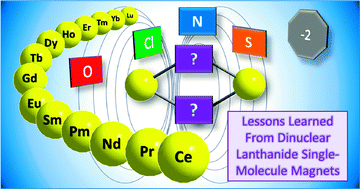Lessons learned from dinuclear lanthanide nano-magnets
Abstract
The quest for higher density information storage has led to the investigation of Single-Molecule Magnets (SMMs) as potential molecules to be applied in materials such as hard discs. In order for this to occur, one must first design metal complexes which can retain magnetic information at temperatures where these applications become possible. This can only be achieved through answering and understanding fundamental questions regarding the observed physical properties of SMMs. While mononuclear lanthanide complexes have shown promise in obtaining high energy barriers for the reversal of the magnetisation they are limited to Single-Ion Magnet behaviour intrinsic to one metal centre with a limited number of unpaired electrons. As a way of increasing the effective anisotropic barrier, systems with higher nuclearity have been sought to increase the spin ground state of the molecule. Dinuclear complexes are presented as key compounds in studying and understanding the nature of magnetic interactions between metal ions. This tutorial review will span a number of dinuclear 4f complexes which have been critical in our understanding of the way in which lanthanide centres in a complex interact magnetically. It will examine key bridging moieties from the more common oxygen-based groups to newly discovered radical-based bridges and draw conclusions regarding the most effective superexchange pathways allowing the most efficient intracomplex interactions.


 Please wait while we load your content...
Please wait while we load your content...